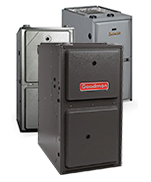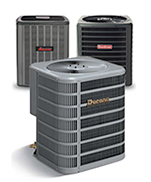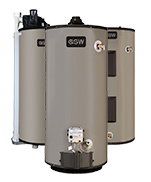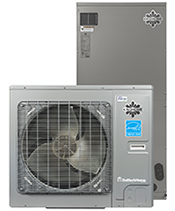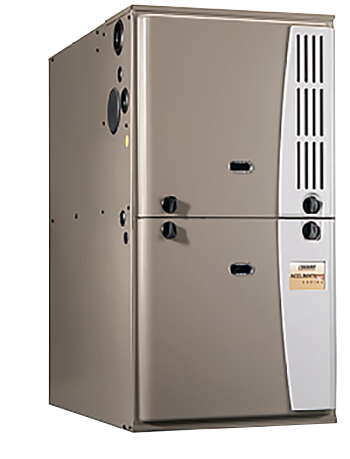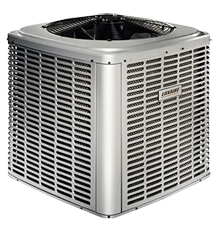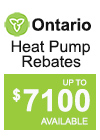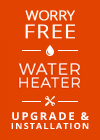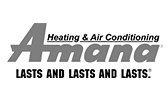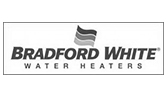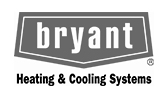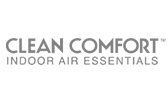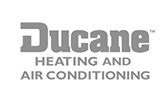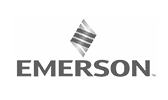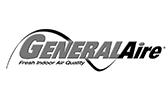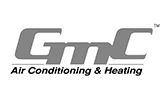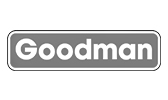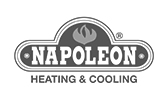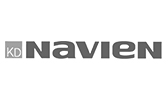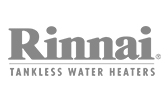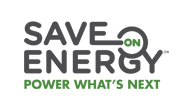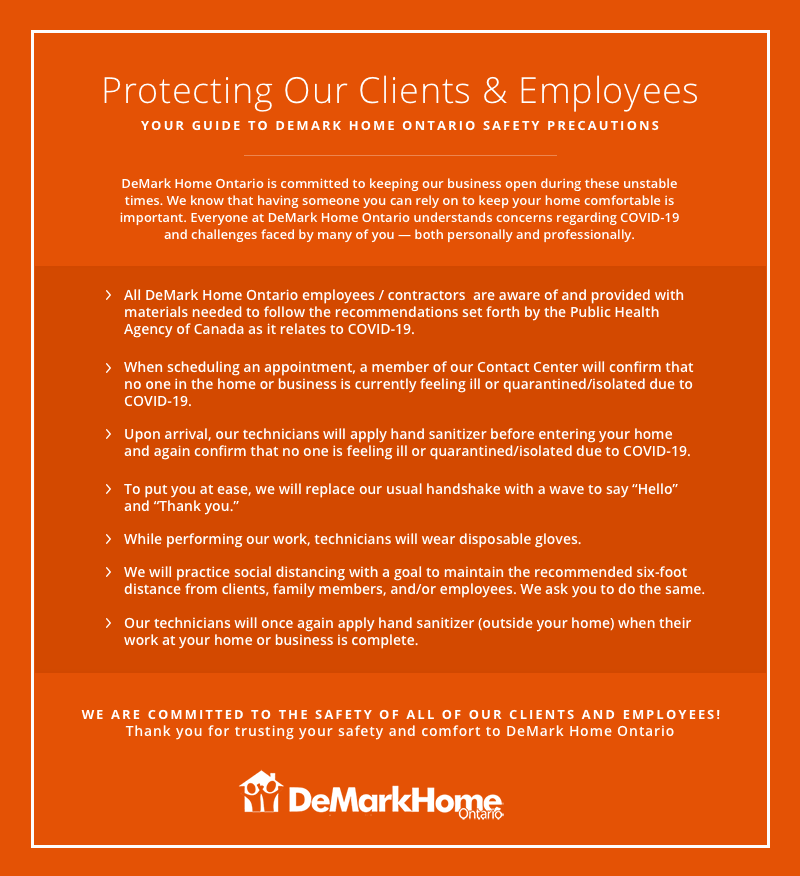FAQ
Why Us?
DeMark Home Ontario is a full service heating and air conditioning company, offering affordable energy efficient products to customer across Ontario. Our mission is to give our customers the best equipment at the best price, with a main focus on quality and customer service. We are a fully licensed and insured company. Our team of home comfort experts are trained and fully certified to meet all of your home comfort needs.
We offer a vast array of HVAC Services to residential and commercial customers across the province. Our heating and A/C installation, maintenance and repair services are always carried out by our experienced HVAC installers and technicians. We only deal in top-quality products that carry great warranties and pride ourselves on offering a 100% satisfaction guarantee, even with same day service. There are no hidden charges and we have both rental and financing plans available across our product line.
We are here to provide homeowners across Ontario with value, efficiency, reliability and to help you save money and preserve our natural resources. DeMark Home Ontario servicing area for HVAC-furnaces, air conditioners, hot water heaters, tankless units includes: Toronto, GTA, Vaughan, Mississauga, Markham, Scarborough, Milton, Burlington, Niagara Falls, Oshawa, Pickering, Ajax, Aurora, Newmarket, Barrie, Ottawa and more. For our full servicing area please click here.
- We offer all of our services with a 100% satisfaction guarantee
- Service and installation by fully licensed and highly trained technicians
- Rent, financing and purchasing options available
- Priority Service available 24/7/365
- The same day emergency service and installations available
- Top quality products with great warranties
- Rebate Programs
Heating
Furnace technology has advanced significantly in recent years. Modern furnaces are designed to provide more even and efficient heating than past furnaces, which can impact both how your system operates and what you notice about your system.
To better regulate temperatures and airflow, modern furnaces move more air over the heat exchanger than older furnaces. The air that comes out of your furnace registers may not seem as warm as the air from your old furnace, but overall airflow is improved. Better airflow means higher comfort.
Also, new furnaces are designed to integrate with high-efficiency air conditioners, so furnace blowers are more powerful to accommodate add-on cooling. Since cold air is much heavier than warm air, your system needs an extra boost from the blower to deliver cool air throughout your home. If you have an older home, this performance boost could produce unfamiliar sounds because air duct systems were originally designed for heating only. To minimize sound levels, choose a variable speed product which automatically changes speeds to meet the airflow needs of both heating and cooling cycles.
Furnace technology has advanced significantly in recent years, raising concerns over chimney use. As a result of changing technology, many existing masonry chimneys aren’t able to meet the specific demands of new furnaces.
There are several reasons for this furnace-chimney incompatibility. First, the size of the chimney can be an issue. Modern, higher-efficiency furnaces transfer more heat into your home and less heat up the chimney than older, less-efficient units. While this means more efficiency for your energy dollar, it also means that the existing chimney might be too large for the new furnace. The result could be improper ventilation of flue products, which can cause condensation problems inside the chimney.
Other considerations include chimney height and location, proper lining and condition of the chimney. Building codes must also be kept in mind to ensure proper draft in the chimney for adequate ventilation.
A standard 1″ throw-away furnace filter is between 5-10% particle efficient. This means that across the particle size spectrum, these filters will only trap about 5-10% of what passes through them. You can improve the efficiency of the filtration of your heating and/or cooling system by upgrading to either a media or electronic style filter. Their particle removal efficiencies are 60-65% and 90-95%, respectively and either is quite an improvement over standard 1″ filtration capabilities. By doing an upgrade like this, you will also cut down on maintenance costs on the system as dirty systems are the #1 cause for malfunction. This will also boost the efficiency of the system as the heat and cooling transfer coils will be able to operate with the least amount of resistance.
You should change your standard 1″ furnace filter every 6-8 weeks. Believe it or not, a filter actually becomes more efficient as it get dirtier…up to a point. After peak efficiency is reached, the efficiency drops again. Make sure to inspect the filter and use your own judgment. Don`t let the filter get “clogged” as this can cut down on the efficiency and/or cause damage to the unit.
Since the average person breathes in over 35,000 pints of air a day, all of which is filled with billions of particles of dust, furnace filters clean the air significantly so that the air we breathe is better for us. Furnace filters remove allergens and dust from the air, purifying the air in our homes.
Furnace filters need to be changed several times a year to maintain their benefits. While they don’t necessarily lower your energy bill, the health benefits are numerous, and it has been proven that, over time, a well-maintained furnace with special attention paid to replacing the filter will prolong the life of your furnace and cut down on unnecessary repairs to the blower or mechanisms due to dust damage.
Adjust the louvers inside the registers on the wall or floor in the room where too much heat/cooling is present so that the registers are partially closed. For example, to get more cooling upstairs during hot summer months, partially or fully close the registers downstairs to force more airflow to the upstairs registers.
Another possible solution is a furnace equipped with a variable speed blower motor. These furnaces are designed to overcome airflow problems in a home and will keep the airflow steady all over the home. These types of furnaces also use about 1/3 the electricity of a standard furnace and can save considerable amounts of money in operating costs.
An Arzel zoning system is also a possible solution to this problem. Zoning is the controlled delivery of heated or cooled air to a particular area of the home, without heating and cooling the entire home. Temperatures can be set and maintained independently throughout the home through the use of multiple thermostats.
We recommend 55 degrees. It`s low enough to save you energy and money but warm enough to protect your pipes and other vital parts of your structure. Also, it`s a good idea to turn your main water supply off even if you`re only going to be gone for a day. A water leak could cause serious and very costly damage to your home.
Naturally, you would expect a heating contractor to recommend an annual furnace cleaning as we do. But we do so for a number of reasons. A cleaning means that your furnace will operate more efficiently, getting more heat for your fuel dollar. More importantly, however, the cleaning also includes a thorough safety check of the entire unit for cracked or defective/damaged parts. This annual maintenance check will assure you a carbon monoxide free winter. An annual cleaning is also recommended by all manufacturers as well as utilities.
The arrow should point in the same direction as the air flow. In most cases, it will point towards the furnace and should fit between the return air part of the system and the furnace. The filter screens out the dust and other impurities before the air is warmed in your furnace and then distributed through the duct system.
Always have your system checked annually to make sure that the unit is safe. In many cases, tiny cracks or perforations in the heat exchanger occur. If your furnace is burning inefficiently or incompletely, carbon monoxide can escape and fill the house causing serious health problems and/or death to those inside.
Yes! HVAC systems are mechanical, so like all mechanical systems they do need to be maintained.
High Efficiency’s Precision Tune up gives you these benefits:
- Peace of mind for you and your family
- Lower home heating bills
- Fewer furnace repairs and heating breakdowns
- Priority service scheduling
- Increased Heating capacity
- Extended Furnace and Heating System life
Our Furnace Tune-Up Procedure Includes, As Needed:
- Inspect and tighten all electrical connections and terminals.
- Inspect, clean, and adjust main gas burners.
- Remove, clean, and adjust ignition/pilot assembly.
- Test the capacitor
- Inspect heat-exchanger(s) & combustion chambers for cracks, rusting, or problem areas.
- Vacuum out blower compartment; return airdrop, and surrounding area. (No duct cleaning)
- Inspect the flue assembly and test furnace flue gas drafting mechanism.
- Test and inspect all furnace safety controls.
- Test, and adjust gas pressure.
- Inspect furnace air filters.
- Inspect and clean furnace blower motor, drive mechanism and fan assembly.
- Lubricate all fan motors and all moving parts,as needed
- Measure and adjust blower for correct airflow.
- Adjust and set proper blower speed(s).
- Clean, level, test, and calibrate thermostat.
- Measure and record heating system output.
- Inspect and test thermocouple output as well as pilot safety switch.
- Measure and record electrical voltage, amperage, and component resistance.
- Inspect and test all system transformers, relays, contactors, and controls. Measure performance
- Seal minor air leaks in plenum and return airdrop.
- Perform a thorough, electronic carbon monoxide check of the house.
- Advise customer on other ways to reduce energy consumption, improve safety and enhance comfort.
- Complete and present report.
Your forced-air heating system can perform more efficiently if you:
- Inspect filters once a month and replace as needed during heating season
- Inspect fan belts for cracks
- Make sure vents and air return vents are clear of obstruction
- Check chimney and venting systems once a year for secure fittings, leaks, and no corrosion or damage
- Keep area around furnace clean and clutter-free
- Do not block the source of furnace combustion air by enclosing furnace is a small closet or by making the room it is located in too air tight
Furnaces prior to 1990 were 55% to 65% efficient. The standard furnaces today are 95% efficient. High efficiency furnaces can be up to 97% efficient. A high efficiency furnace can save up to 55% of the heating bill as compared to your old unit. Please contact us and one of our highly trained professionals will be happy to assist you in selecting the right efficiency rating for your home.
Proper sizing is the most important thing in replacing a furnace. Bigger isn’t better. Smaller isn’t cheaper. The best comfort and efficiency is through a properly sized furnace. If the furnace is too small it won’t keep the house at the desired temperature when it is cold outside. If the furnace is too big it heats the house too quickly and then shuts off. This results in hot and cold swings in temperature in the house.
To properly determine the correct size for a furnace please contact one of our professionally trained representatives who will be able to assist you in making the right decision for your home.
The term “variable speed” refers to the furnace’s indoor blower motor, which moves at different speeds to precisely control the flow of heated and cooled air throughout your home. Better airflow control has several benefits:
Electrical efficiency
Variable speed motors can actually save you money on your energy bills, as they consume less electricity than standard motors.
Cooling efficiency
Variable speed technology also means you will gain heating efficiency or AFUE.
Zoning
Variable speed motors are excellent for zoning, which allows you to customize your comfort in different areas of your home and control your energy bills.
Air quality
A variable speed motor can also help clean the air in your home. When the fan is in constant operation (indicated by the “Fan” setting on your thermostat), the motor will continue to slowly circulate air, allowing filters to capture more contaminants.
Humidity control
A variable speed motor combined with a programmable thermostat allows you to control the amount of humidity in your home for improved indoor air quality and comfort
Two-stage heating means the furnace has two levels of heat output: high for cold winter days and low for milder days. Since the low setting is adequate to meet household-cooling demands 80% of the time, a two-stage unit runs for longer periods and provides more even heat distribution. A two-stage furnace has the same concept in mind as a modulating furnace. The difference lies in the fact that while a modulating furnace can operate at any capacity between 40% and 100%, a two-stage furnace operates on a low-stage and a high-stage. The low and high stages have preset BTU outputs. On most days, the furnace will operate at its first stage to only provide the heat you need to stay comfortable. On those very coldest days of the year, this furnace will ramp up to its second stage and give the full BTU output of the furnace to keep satisfying the heating requirements of the home. It`s basically like having two furnaces in one – one for the warmer days and one for the very coldest.
Longer, low-capacity operation has many advantages:
Consistent comfort
Two-stage heating eliminates the temperature swings associated with standard furnaces, regulating temperature to within as little as one degree of the thermostat setting.
Quiet operation
Two-stage furnaces start in the first stage, when the amount of heat required is lower, instead of reaching full capacity all at once. That means there’s no sudden “kick” or blast of air.
Improved air filtration
Low-speed operation allows your filters to capture more contaminants (because air is constantly passing through them), so you can breathe easier.
Efficient performance:
Because the furnace operates mostly in its lower-capacity first stage, it burns less fuel than a standard furnace that always runs at full capacity and shuts off when the heating demand has been high.
Most furnaces are either “off,” providing no heat, or “on” at full capacity, with the burner and blower operating at 100 percent. This causes the temperature in your house to go up and down by several degrees – affecting both your comfort and your energy bills. Furnaces are designed to keep your home warm on the coldest of days. But in most cases, those days account for only 2-1/2 percent of the heating season. The rest of the time, your furnace is providing more heat than is needed to satisfy your comfort requirements. Modulating furnaces solve this problem by “modulating” between different capacities (40-100%), depending on the comfort requirements of the homeowner and the temperature outside. This results in lower operating costs, quieter operation and much more even temperatures throughout the home. It`s like having a separate furnace to handle the unique heating requirements of each day – all in one unit!
The efficiency of a furnace is measured in a rating known as A.F.U.E. (Annual Fuel Utilization Efficiency). A lot like your car’s miles per gallon rating, A.F.U.E. tells you how efficiently the furnace converts fuel (gas, oil or propane) into heat. An A.F.U.E. of 80% means that 80% of the fuel is used to heat your home, while the other 20% basically goes up the chimney.In 1992, the government mandated a minimum A.F.U.E. rating of 78% for furnaces installed in new homes. (In contrast, many furnaces manufactured before 1992 had A.F.U.E. ratings as low as 60% — so nearly half the fuel was being wasted.) Furnaces with A.F.U.E. ratings of 78% to 80% are considered “mid-efficiency”, while those with ratings of 90% or higher are termed “high efficiency.”In general, a higher efficiency furnace usually means two things:
- lower monthly operating costs
- higher comfort levels
If you have an older furnace (10-15 years old with an estimated A.F.U.E. of around 60%), you could save up to 40% on your heating bills by replacing it with a new high-efficiency furnace. So the cost to replace your older, inefficient furnace is paid back through lower utility bills.
You have two choices – you can replace your furnace before it breaks down, or wait till after it breaks down.If you replace it before it breaks down, you can take time to shop for the best deal, and install it on your own timetable. If you wait till after its breaks down (probably on the coldest day in the winter) you are usually in an emergency situation and need to replace it immediately. You may not be able to get the best deal and may have to settle for the first furnace you can get. Therefore, you may want to consider replacing your old furnace before it breaks down.The average 80% standard oil or gas furnace lasts 18 years. Most high efficiency 90%+ furnaces only last 12 years due to their longer run times and design characteristics. It makes sense to have your furnace checked by an HVAC professional every few years. This is especially true for older units. Once you get past the life expectancy of the unit consider planning for a replacement unit.These symptoms can indicate a furnace should be replaced
- Frequent pilot light outages
- Delayed ignition
- Yellow flame or wavering flame
- Excessive soot or corrosion
- Too much or too little heat
- The smell of sulfur or burnt eggs
Cooling
By keeping your unit operating at peak performance, you will recover any money invested in upkeep by lower repair costs and savings on your electric bill.
Both the homeowner and a professional can accomplish different aspects of preventative air conditioning maintenance. Homeowners can:
Regularly make sure the condensing unit located outside is not covered up or clogged with leaves or debris. The unit needs to breathe, to draw air into the system.
Change the filters regularly.
Do not use a hose and water to try to clean the interior of the unit. Cleaning the unit in this way can lead to serious risk of electrical shock and possible shorting of electrical components.
Professional HVAC servicing should include:
- Balancing refrigerant levels.
- Making sure all electrical components and controls are working properly.
- Checking and cleaning the evaporator and condenser coils.
- Oiling motors (if applicable).
- Checking the thermostat for functionality.
- Checking filters.
One last word of advice in regular air conditioning maintenance is to ensure that your ducts are properly sealed. When cooled air leaks from supply ducts, or when hot air creeps into return ducts, this can lead to wasted energy, and an overworked air conditioner. Your ducts need to be airtight for the most efficient performance from your cooling unit. Products such as the Aeroseal duct sealing process are an effective and affordable way to seal the ductwork in your home.
Should you have any further questions, feel free to contact us by phone or via our contact form at your convenience.
Regular maintenance by the homeowner and a dealer helps AC units operate efficiently year after year.
Homeowner Maintenance
- Clean and replace filters as needed during cooling season
- Clean air conditioner coils
- Keep debris and leaves away from air conditioner unit
- Use a hose to clear the aluminum fins from airborne debris
Dealer Maintenance
- Have dealer make sure correct amount of refrigerant is in air conditioner; do not overcharge refrigerant when filling
- Find and repair any leaks in system
- Measure air flow through coil
- Verify correct electronic control sequence
- Inspect electrical terminals
- Oil motor and check belts
- Check accuracy of thermostat
The most common mistake people make in running their air conditioners is to open their windows at night. Half the job of an air conditioner is to remove the humidity from the air. Relative humidity increases at night because the temperatures are generally cooler. The air conditioner works all day long to reduce the temperature AND remove the humidity. Opening the windows at night lets all the humidity back in the house and causes the air conditioner to have to work harder the next day to remove it. Therefore, you get less comfort and reduced or no savings.
Choose a strategy. One strategy is to leave the windows open all the time and don’t run the air conditioner. The other strategy is to leave the windows closed all the time and run the air conditioner. The only bad strategy is to open and close the windows each day while you are running your air conditioner.
Please check the following things:
- Is your furnace filter dirty? Please check your filter and change it if it is clogged with dirt and dust.
- Check your outdoor unit – it may be dirty and require cleaning.Check all return air grilles to make sure they are not blocked by furniture.
- Check all supply air registers to make sure they are open and blowing air. (The return air grilles are normally located on your walls and are wide and flat).
- Check the SSU switch (it looks like a light switch on a gray box located at the furnace) to be sure it is in the “ON” position.
Other possibilities that will require a service call:
- The compressor could be damaged.
- The refrigerant charge could need attention
Your condensate drain for the air conditioner may be clogged with debris. Please make a service call to clear it.
Ensure you have all south facing window shades drawn to reduce heat from the sun first thing in the morning.
- Is your filter clean?
- If dirty, change it and see if that makes a difference. If it still doesn’t work, please make a service call.
- If clean, the outdoor unit may be dirty and may need to be cleaned by one of our service technicians. Or, the unit could have a leak and require a service technician.
Before our technician can work on the equipment, you need to get rid of the ice. Here is what you need to do:
- Turn the air conditioning switch on the thermostat to OFF. This will prevent your heating and cooling equipment from turning on.
- Raise the temperature on the thermostat to the maximum temperature. This will prevent the outside (condenser) unit from coming on.
- Turn the Fan switch to ON (it is probably in the AUTO position right now).
- Leave the furnace fan running until a technician arrives. This will allow the ice to melt and the technician will be able to diagnose the air conditioner system upon arrival.
- After clearing the ice, feel free to place a service call.
Answer #1:
Is the power switch turned on? Generally there are two switches: one for the furnace and one outside by the air conditioner unit.
- Is your switch off? If it is, turn the switch to the on position.
- If you find that the unit is still not cooling after turning on the switch, please make a service call.
- If the switch is on, but not cooling, a service call is required.
- Is your thermostat set to the cooling position? If the answer is no, turn your thermostat to the cooling setting. If the air conditioner is still not cooling, a service call is required.
Answer #2:
Have you checked the fuses/electrical breaker to ensure it is switched on?
- If you have, turn the breaker on or change the fuse.
- If the unit is still not cooling after turning the breaker on, a service call is required.
Answer #3:
Check your furnace filter. A furnace filter that is clogged with dust and dirt can result in your air conditioner not working.
- Is the furnace filter dirty? If the answer is yes, change the filter and call for service if the system is still not cooling.
- If the furnace filter is clean, a service call is required.
Answer #4:
Check the outside temperature. If the temperature is below 13 degrees Celsius or 55F, your A/C may have a safety measure that prevents the unit from running when temperatures are below 13C/55F.
- Is the outside temperature above 13C? If the answer is yes, a service call is required.
- Is the outside temperature below 13C? If the answer is no, wait until the outside temperatures are greater than 13C and call us back if system is still not cooling.
Yes, you can. There is a disconnect in your panel box or at the outside unit. Turn it off over the winter and save energy. But when you turn it on again in the Spring, do it at least 24 hours before turning on the cooling equipment. A day`s delay will give the oil time to warm and lubricate the essential parts upon startup.
An air conditioning system consists of 2 parts: an outdoor unit (where liquid refrigerant is contained) and an indoor coil (where the refrigerant is pumped into). As the air moves across the air conditioning coil (usually located on top of the furnace), the refrigerant removes the heat from the air as well as the moisture by condensing it on the cold surface of the coil. In this way, an air conditioner not only cools but also dehumidifies the air. Virtually any system can have air conditioning hooked up to it provided that it is a forced air system. In cases where there is not forced air heating or a duct system, “ductless” air conditioning systems to cool an entire home or small business.
The one thing you should do is cover the top of the condensing unit (with a piece of plywood with something to hold it down) so that no debris can get in. We recommend putting some sort of a hard cover over at least the top of the unit to also protect against damage from falling ice, etc. A specially made cover is a good idea but it`s not absolutely essential. A cover will also protect the finish and guard against rodents making the unit their winter home. Any cover, however, must be removed before the start of operations the following Spring.
The answer is most likely YES, but this is mainly due to four main reasons:
- Matched system design – All outdoor cooling units are specifically designed to work with matched indoor units for optimum efficiency and performance. Air conditioner and heat pumps may “work” with other indoor units, but the result is a definite compromise in overall system performance.
- Design advances – In recent years, indoor blower coil units have undergone numerous design advances—especially in the areas of air handling performance, filtering efficiency and operating sound levels. A new outdoor unit will also include the latest design advances.
- Higher cooling and heating efficiency – The cooling and/or heating efficiency rating assigned to a given air conditioner or heat pump is based on matched system performance. While you may gain higher efficiency by replacing only the outdoor unit, the efficiency levels (and savings) will not be as high as with a matched system.
- Equipment age – If an air conditioner or heat pump outdoor unit is 10 years old and needs to be replaced, the indoor unit is just as old and has been subjected to the same amount of wear and tear. Replacing both units means you won’t have to replace the indoor unit in a short time—you’ll have years of service from both units.
“Variable speed” refers to the fan motor inside the air handler—the indoor part of an air conditioner that moves cooled or heated air throughout the ductwork of your home. An air handler is usually a furnace or a blower coil.
Unlike conventional single-speed motors, a variable speed motor runs at a wide range of speeds to precisely control of heated and cooled air throughout the home.
Better airflow control has several benefits:
Electrical efficiency
Variable speed motors can actually save you money on your energy bills, as they consume less electricity than standard motors.
Cooling efficiency
Variable speed technology also means you will gain air conditioning efficiency or SEER.
Zoning
Variable speed motors are excellent for zoning, which allows you to customize your comfort in different areas of your home and control your energy bills.
Air quality
A variable speed motor can also help clean the air in your home. When the fan is in constant operation (indicated by the “Fan” setting on your thermostat), the motor will continue to slowly circulate air, allowing filters to capture more contaminants.
Humidity control
A variable speed motor combined with a programmable thermostat allows you to control the amount of humidity in your home for improved indoor air quality and comfort.
Two-stage cooling means the air conditioner or heat pump has a compressor with two levels of operation: high for hot summer days and low for milder days. Since the low setting is adequate to meet household-cooling demands 80% of the time, a two-stage unit runs for longer periods and produces more even temperatures.
Longer cooling cycles also translate to quieter, more efficient operation and enhanced humidity control. Compared to a single-stage unit, a two-stage air conditioner or heat pump can remove twice as much moisture from the air. This is important because when moisture levels are high, there’s a higher potential for mold and other pollutant problems.
Bigger isn’t better. Smaller isn’t cheaper. If an air conditioner is too small it won’t keep a house cool enough on hot days. If the air conditioner is too big it will cool the house too quickly without removing the humidity. This will make the house clammy and uncomfortable. The best comfort and efficiency are by a properly sized air conditioner. We recommend that an air conditioner be specified to maintain 20 degrees cooling below outside temperature. Therefore, the house should be able to maintain 70 degrees when it is 90 degrees outside.
To properly size an air conditioner, please contact one of our professionally trained representatives to further assist you in making the right decision for your home.
The same conditions hold true for an air conditioner as with the furnace. The main difference is that having no air conditioning is generally not a life-threatening situation as it is with heating. Therefore, you are not in an emergency situation to replace the air conditioner when it fails.
The average central air conditioner lasts 15 years while the average room air conditioner lasts 10 years. Once you pass the life expectancy of an air conditioner you may want to begin gathering information on which bands of equipment and which dealer you want to replace the air conditioner.
When replacing an air conditioner, make sure it is installed in a shady spot. This can save one to two percent of the energy bill. Avoid placing the air conditioner on the roof or in the attic whenever possible.
An air conditioner seems as if it cools your home’s air, but it actually makes your home less warm by removing heat from the indoor air and transferring that heat to the outdoor air.
Heat is extracted from the home by passing indoor air across a refrigerant coil in the indoor unit. Refrigerant lines then carry the heat to the outdoor unit, where it is released into the outside air. The cooling cycle continues until the indoor temperature reaches the thermostat setting.
S.E.E.R. stands for Seasonal Energy ,Efficiency Ratio, the standard measurement of air conditioning efficiency established by the U.S. Department of Energy. What does this mean to you? Higher S.E.E.R. ratings translate into greater energy efficiency which means lower summer cooling bills. The most important thing to remember is the higher the S.E.E.R. rating, the more money you save.
Why a higher efficiency rating (SEER) saves energy: If your current air conditioner or heat pump is more than 10 years old, it could be operating at lower than 8.00 S.E.E.R. Compare the estimated annual bill of an 8.00 S.E.E.R. system to that of a higher S.E.E.R., such as a 12.00 or 13.00. For instance, if the annual cooling bill of an 8.00 S.E.E.R. system in a particular area is $1,000, it would cost only $615 for a 13.00 S.E.E.R. system to operate at the same capacity in the same area. This is an annual savings of 38%. Now that makes sense, doesn’t it?
Water Heaters
Mixing valve is a valve that connects hot water and cold water copper lines controlling the hot water temperature to prevent scalding. The valve allows tanks to heat your water to 60 degrees Celcius (bacteria-killing temperature), and then cools water to 49 degrees Celsius, once the water exits the tank. This effectively prevents scalding, for reliable, everyday use in your home. It is an option that you have as a customer to install a mixing valve which the technician is required to consult you on.
Metal is the most common type of liner. It fits inside the chimney and ensures that the chimney is properly sized. This properly vents the products of combustion from the gas-fired appliances and prevents chimney deterioration. Many masonry chimneys have clay tiles. They are inexpensive, readily available and perform quite well for open fireplace chimneys that are properly maintained. Cast in place liners are lightweight, Castile, cement-like products that are installed inside the chimney forming a smooth, seamless, insulated passageway for the flue gases. They add structural integrity to aging chimneys.
Most commonly it is a metal liner inside your chimney that safely expels hot gases to the exterior atmosphere. A properly installed chimney liner will update your home to the Technical Standards and Safety Authority (TSSA) building standards required for atmospheric/ conventional vent gas water heaters. Moisture from your vented hot water tank needs to be released through you chimney. Chimney liners prevent moisture damage, and in turn, can protect your family from dangerous gas seepage or a house fire. Outdated masonry in your chimney is very susceptible to cracks. A weakened chimney structure may allow carbon monoxide, combustibles, smoke, or acidic gases into the leaving space. Heat from contact with a combustible material poses a fire risk. A metal chimney liner will provide a protective battier between your home hot water tank’s exhaust and the construction materials that surround it. If your home doesn’t not currently have a chimney liner, technician upgrading a hot water heater must properly install a chimney liner to bring your hot water heater up to TSSA standards. Hot water heater will not be upgraded unless a chimney liner is also installed at the same tome or within a short period of time when the weather permits. Chimney liners can cost anywhere between $350 to $600 for the installation, however with Summitt Home Services we will ensure that your chimney liner is fitted with a safe and durable liner for only $2.95 monthly with no any extra charges for the installation.
Many homeowners rent their natural gas water heaters as with renting you enjoy the peace of mind that comes with knowing that you are covered 24/7 if anything goes wrong with it. When it comes to selecting your rental water tank the size is considered to be one of the most important decisions to be made by homeowners. As a customer you need to choose the size that will accommodate the needs of your family and provide you with most reliable service. The right size will ensure sufficient hot water supply while maximizing the efficiency. By asking yourself some of the below questions will help you understand your family’s hot water usage patterns and help you make the right decision in your selection:
- Does your current water heater keep up to the hot water you require?
- How old are the children in your home? Teenagers tend to use more hot water.
- How many dishes and clothes are washed daily?
- How many bathrooms in your home?
- Do you use a dishwasher?
- Do you have a whirlpool bath?
Once you are aware of your family’s hot water usage habits we will help you determine the right tank size for your home and you can also refer to the chart below. Click here to view sizing chart.
Yes. If you are experiencing insufficient hot water due to changes in family size or lifestyle changes, we can replace your current hot water heater to a bigger size free of charge to you as long as the space permits. If your current water heater is now too large due to changes in your family size or lifestyle changes, we can downgrade it to a smaller size also free of charge.
No. You will continue to be billed by Enbridge Gas Distribution and Summitt Home Services water heater rental charges will appear in the Other Companies section of your Enbridge Gas Distribution Bill.
No problem, just like today, hot water tank rentals stay with the home and you have no further obligations or concerns .In Ontario when a home is sold it is standard practice that rental water heaters and their associated agreements are assumed by the new homeowner. Your agreement of purchase and sale will indicate that the water heater is a rental and not part of the home the buyer is buying. Please see your terms and conditions for more details. Be sure to call us when you are moving so we may arrange for the installation of a new Summitt energy efficient water heater in your new home.
All you need to do to minimize scale buildup is perform 2 minutes of maintenance twice a year to flush the scale from the bottom of the water heater tank. Just fill a bucket of water from the drain valve near the bottom of the tank, which will effectively wash away scale and sediment from the inner surface of the tank when done regularly. When the bucket is full, close the valve and dispose of the water outside, and that’s it! Repeat every 6 months and reap the reward of ongoing energy savings!
Summitt water tanks are currently available in the province of Ontario.
Standard hot water heater installation can last between 45 min to 2 hours based on your existing tank type and size.
Summitt Home Services will be responsible for both maintenance and the maintenance costs of your Summitt water heater as long as it is installed in your home and you will not be liable for any costs associated with the maintenance of your hot water heater.
Yes, we will upgrade your ABS piping as it is no longer acceptable per code as a natural gas combustion products vent pipe. This upgrade is free of charge and is included in your standard installation.
Summitt Home Services provides only the highest quality water heaters to its customers. Water heaters available for purchase from big name retailers or even local contractors are manufactured to a lesser quality standard in order to achieve a lower initial sales price to the consumer. These water heaters are inferior products and are likely to have a significantly shorter life span than the water heaters provided by Summitt. In addition, these water heaters are likely to require more frequent and very expensive repair resulting in higher life cycle costs to the consumer. With a Summitt water heater you have the peace of mind that you have the highest quality water heater of its type available, and in the unlikely event that there is a problem with your water heater Summitt will fix it, free of charge, for as long as it is installed in your home. Repair costs can be as high as $695 when you own the equipment, with Summitt Home Services you are fully covered all repairs, parts and labour are included.
Your water heater may be functioning at this time, and you may have experienced few, if any, problems with it. However, if you are like the vast majority of homeowners, you probably had no idea that old water heaters consume up to 30 % more energy. Sediment build-up in your current water heater reduces your energy efficiency by up to 30%, slows down heating time and reduces water output. A New Summitt Home Services Water Heater will use less energy, heat quicker and give you more hot water. In addition you will receive first 2 month free rental and free upgrade of you back ABS piping should you require one.
No, there are no hidden charges.
None. We will absorb all of the costs related to the installation of the new water heater, as well as the removal and disposal of the old one for all standard installations.
For existing Direct Energy customers with a water heater installed before Sept. 15th 2010 or a home built in 2010 there are no cancellation charges.
Your old water heater is returned to your current provider free of charge to you.
No, you do not need to contact your utility or current water heater provider. Your water heater is independent of your utility and your current provider. We will make all necessary arrangements for the return of your existing water heater at no charge to you.
- 2 MONTHS FREE rent
- FREE installation and removal of your existing tank
- NO up-front equipment cost
- NO hidden charges
- FREE upgrade your venting pipes at NO EXTRA COST in order to bring you up to current TSSA code
- FREE maintenance program 24/7/365
- FREE lifetime service and repairs on all parts
- NEW Energy Savings water heaters
- QUICKER HEATING TIME and INCREASED WATER OUTPUT
- TRANSFERABLE to the next owner should you sell your home
- Decrease in home insurance
DeMark Home Ontario Inc is partnered with Summitt Home Services to offer customers the best rental services. Your hot water heater will be rented through Summitt Home Services and the rental charge will appear in other companies section of your Enbridge bill.
Customers who currently rent their hot water heaters from Direct Energy installed before September 15th 2010. Customers who own their hot water heaters and customer who are having new installation such as newly build house.
Tankless
Rebates are available through the Ontario Power Authority (OPA) and Ontario Home Energy Savings Grants. For further information visit: https://saveonenergy.ca/Consumer/Programs/HVAC-Rebates
Are there any costs involved in having a rental tankless water heater installed?
Tankless water heaters are normally installed on the inside of the outside wall of the basement or main floor. The location will depend on where your existing hot water heater is located as that is where the gas and water lines are.
Tankless water heaters are very safe as they require a perfect air/ gas mixture which means they will not produce excessive carbon monoxide. Sensors around the unit will shut it down if it gets too hot.
Yes. Tankless hot water heaters have a digital temperature control which can be adjusted to the desired temperature.
No. Tankless water heaters will not run out of hot water as it uses new technology and instantly eat the water. You can do laundry, use dishwasher and take a shower and enjoy the comfort of sufficient supply of hot water. Since a tankless water heater heats the water as you use it, you can have an endless supply of hot water, of course this will depend on properly sizing the water heater.
Yes. Tankless water heaters only use energy when needed to heat water hence reducing energy consumption and gas emissions.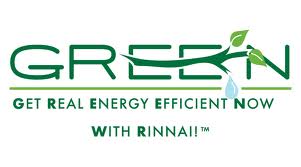
Tankless water heaters start to heat up water the minute it is turned on, however the cold water between the tank and your taps still has to travel through the pipes in the house to get to the fixture. Same as with a regular hot water tank you will notice cold water coming out of the tap until the hot water reaches it.
Depending on the model of tankless water heater, and the size your existing tank and its energy type (gas or electricity), you could save typically save 20%-45% of your total heating costs. With a tankless system, you can reduce your hot water heating costs by approximately 30%-40% assuming you use the same amount of water. These energy savings translates to dollar savings for you and reduced impact on our environment. Having a hot water system that eliminates the storage and heats water only as you use it can greatly reduce your energy usage.
Tankless water heaters work much different than regular water heaters. When you turn your tap on this tell tankless water heater to turn on. The gas burner will come on and instantaneously heat the water you need. The time it takes to get hot water is related to the distance the hot water has to travel from the water heater to where hot water is needed.
With a traditional water heater system, your tank sits in one space in your home (usually the basement). Tankless systems are mounted on the wall and do not occupy much space. They can produce enough hot water to supply the whole house without storing water in the tank.
Tankless water heaters, which are also sometimes called instantaneous hot water heaters or on demand water heaters, are water heating systems that do not have a storage tank. They heat water on demand only when you need it, which helps reduce heat loss through water pipes or the tank walls themselves. An electric element or a gas burner is used to heat the water.
Duct Cleaning
Most of the time this is from a phenomenon referred to as “Candle Sooting”. When candles are burned repeatedly, the soot gets pulled into the cold air returns, moves through the filter, and blows out of the supply side of your HVAC system causing black stains on ceilings, walls, carpet, etc. The best alternative to prevent this is to use soy candles or candle warmers.
Yes. Our duct cleaning services are guaranteed to leave you a satisfied customer. We will make every attempt possible to make sure you are completely happy with our service and will take all necessary measures to leave you with a positive impression.
We believe it is definitely worth the money as the dust, debris and all the dirt is vacuumed out of the air ducts creating a cleaner air that you breathe in your home. We received feedbacks from customers who let us know that after the Duct System Cleaning chronic allergies and asthma are not as severe inside their homes.
Duct System Cleaning will not make a mess as with our cleaning system all of the dirt, dust and debris are vacuumed back to the truck, outside, where it is captured into a hold compartment or in a portable equipment which is brought inside the home to perform cleaning. Contractors will perform a clean and neat job.
There are a lot of factors that go into the amount of time needed to properly clean a duct system. How many systems does the home have, the accessibility of the HVAC system, duct work and manpower. The average three or four bedroom home will take approximately 2 to 3 hours to complete. Please refer to the average duct cleaning time table for a better estimate on your home size.
The best way is called a Source Removal and should only be done by a professional contractor. The contractor places the system under a negative pressure, using a specialized and powerful vacuum. The vacuum draws air through the ducts, then with different types of pneumatic tools the on-board compressed air dislodges dirt, dust and debris that otherwise will lay in the system, travels down the ducts and into the vacuum hose and empties into the Hi-VAC truck mount unit. Sometimes portable units are used which must be brought into the home. These units filter all of the dust and debris inside the home.
DeMark Home Ontario Inc. recommends duct cleaning every 2 to 3 years. If someone in your home or place of business has asthma or chronic allergies, yearly cleaning may be beneficial.
BEFORE. We strongly recommend the carpets be cleaned after the duct cleaning mainly because there is a phenomenon referred to as “Candle Sooting” which causes the area around the registers to be stained black. By cleaning the air ducts prior to the carpet cleaning the contractor will remove a majority of this soot so you can keep the carpet cleaner.
Duct Cleaning MUST be done AFTER all of the drywall sanding, wood sanding, wood cutting, carpet laying, etc. is completely finished. We recommend that all the dust has settled before the cleaning of the air ducts takes place to ensure your ducts are dust free after the cleaning.
We suggest that Duct Cleaning is done right after the installation of your new equipment to ensure that all the dust, dirt and debris which was collected in the air ducts is removed.
The benefits of Duct Cleaning are cleaner and healthier air that you breathe in. Heating and Air Conditioning duct systems will collect dust, dirt and debris over years. This matter will lay in your system and little by little will disburse back into your home. It is dark and sometimes damp inside you air ducts and this is a great place for mold, mildew, bacteria and fungi to form. The removal of such contaminations from the duct system should be #1 priority in improving indoor air quality. Also duct system cleaning helps to reduce the dust and particulates in your home and improves the efficiency of your heating and cooling equipment.
Should you still be left with unanswered questions, don’t hesitate to contact us via our contact form below and a representative will respond to you within 2 hours. No question is too big or too small, we’re always here to help!
Questions?
by calling (647) 847-2998 or filling out our easy form.
